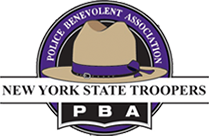The Deputy Director for the Statewide Wireless Network project was in Plattsburgh recently discussing the project. Below is an article from The Press Republican of Plattsburgh with further information.
By: CASEY RYAN VOCK
Staff Writer
June 05, 2006
PLATTSBURGH — The New York State Office for Technology is on its way to implementing a public safety radio network that will connect police, firefighters and emergency workers across the state.
Since 1996, the state and several of its agencies had been planning to replace their nearly 30-year-old conventional analog radio systems, according to Thomas J. Cowper, deputy director for the project known as the Statewide Wireless Network, who discussed the project’s origin and the state’s plans recently at Plattsburgh State.
Rather than create redundant systems, the state began researching one statewide system to be used by all state agencies.
"The cost to bring users on to that one network is very small compared to having to build out a whole new network for each agency," said Cowper, who spent two years as a sergeant with Plattsburgh-based State Police before working for the Office for Technology.
M/A-COM, a Virginia-based developer of communications technologies, was selected by the state as the contractor for the Statewide Wireless Network, or SWN, which is estimated to cost more than $2 billion dollars and to be financed over 20 years.
The project is funded by the state wireless communications surcharge.
However, Cowper said, the corporation will not receive any money until the project is complete and the state has inspected and is confident with it. The state also has the option to purchase the network at any time during the life of the contract.
"We have specified that the network has to support up to 65,000 users statewide," he said. "That would be the largest public safety radio system in the country by far."
The network will be a modern trunked radio system that will have "all the bells and whistles," according to Cowper.
"It will be able to transmit voice and data at the same time," he said. "Our coverage requirement is for 95-percent mobile coverage over the geographic environment and 97-percent coverage on all of the state’s roadways. It will be highly reliable and public-safety grade."
The network will also have the capability to automatically locate vehicles and to fully encrypt data transmissions.
According to Cowper, the project goals are to improve communications for the users, improve interoperability among the users, save taxpayer dollars by eliminating redundant infrastructure and to reduce the proliferation of radio towers.
"We want to share the existing infrastructure as much as possible," he said. "Certainly, all state agencies are going to use this one network."
"And we already have many local agencies that have asked to participate as full partners on our network, to use our system as their radio network. It will operate almost like having their own radio system. They will have their own virtual, private network on our system for day-to-day operations.
"But during a crisis, we’ll all be able to link in."
Cowper said he expects the infrastructure to be in place and fully operational by 2010.
Last week’s summit was one of nine being held this spring and summer in different areas of the state in effort to educate agencies, authorities, municipalities, departments and citizens about the state’s implementation of the State Wireless Network.
